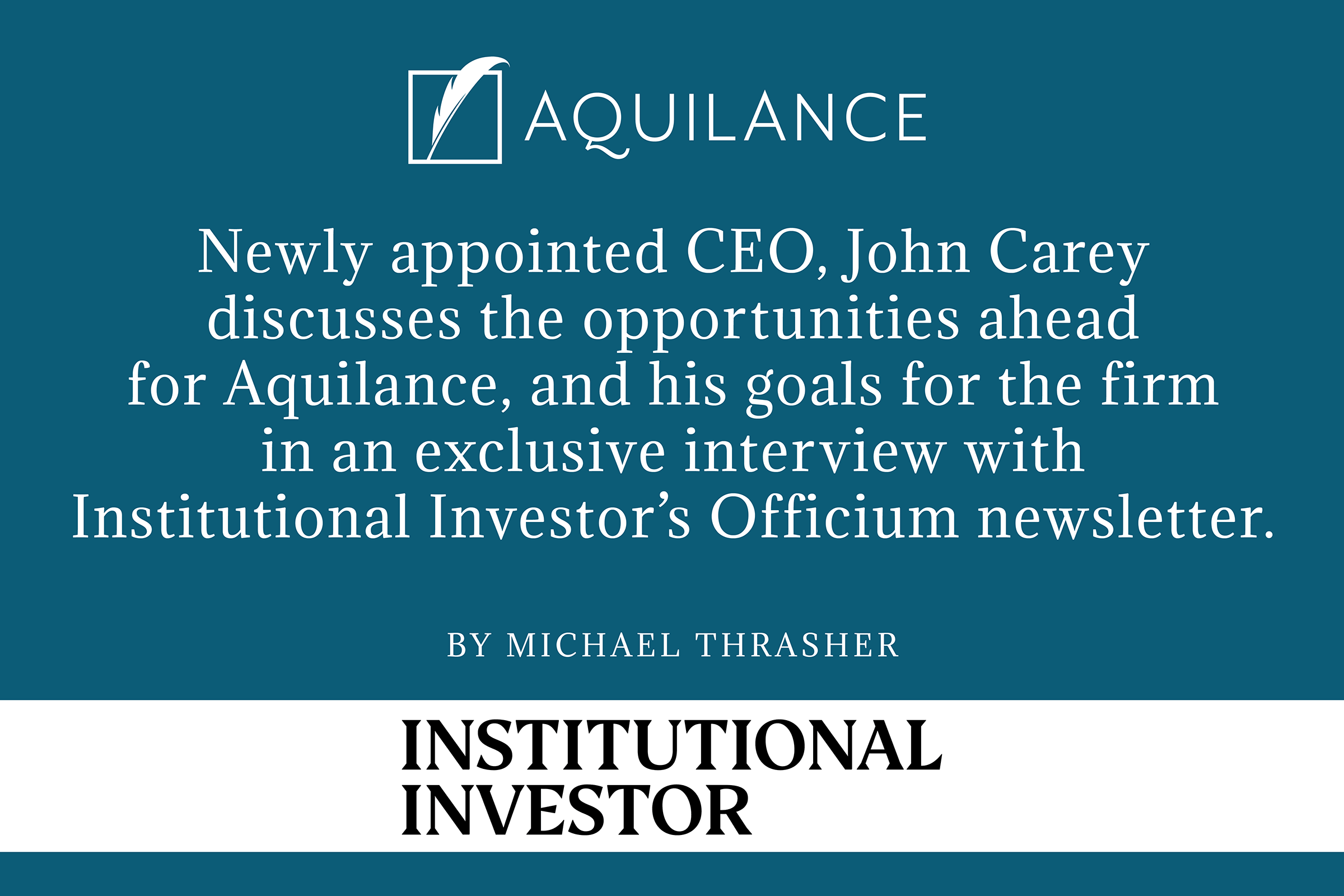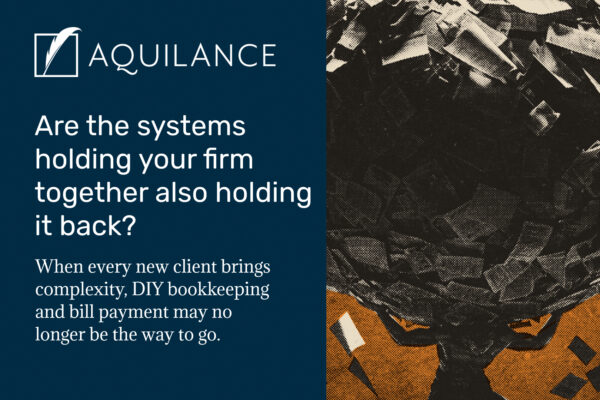by Michael Thrasher, Senior Reporter at Institutional Investor magazine
in: Officium newsletter
When Aquilance, a company founded in 1987 that pays bills for and provides personal bookkeeping, accounting, and investment reporting to family offices, reached out in January to John Carey about becoming its new CEO, he already had some business ideas.
Carey spent much of the past three years thinking about how to better meld banking and wealth management together as the head of consumer experiences at Envestnet, the software company that helps the largest U.S. banks and wealth managers tend to $6.1 trillion in assets. He recognized an opportunity to elevate the family-office back office, but how to achieve that wasn’t clear.

Aquilance turned out to be an ideal, timely launchpad for what Carey envisioned. Since 2021, the company rebranded and recapitalized itself, retained and attracted clients and relationships, and tripled its top-line revenue, according to Carey. (In addition to other customers, the firm currently has about 50 single- and multi-family-office clients. The average family has about $100 million in assets, Carey said.)
With improved technology, Aquilance could keep that momentum going. He accepted the job.
“As I get my arms around the business, this is one of the most surprising things: all that growth was organic. It came from a mix of new clients and relationships, but also underlying there is a continued growth in the actual book of business,” Carey said in his first interview since he started at Aquilance in June. “As the clients use our services and introduce new complexity that they want us to help with, it increases the scope in which we service them and the fees for that obviously go up.”
Carey, who is still learning the business and getting to know clients, has wasted no time pursuing the technology roadmap in mind. A new CTO and a head of product development started within a week of Carey last month — both people he worked with previously. He’s also looking for a chief revenue officer.
“We have a long history of executing and thinking about the business, and I trust them, they trust me,” Carey said about the two new hires. “And I always love it when A CEO can bring with them their own team because that speaks volumes, in my mind.”
Interestingly, artificial intelligence didn’t come up until nearly the end of a long conversation with Carey. The software company CEO is excited about the potential impact of AI. But at least as of this email, even AI-powered tools are far from replacing what Aquilance does. For example, the software that best aggregates financial transactions can still only correctly label them (as a category of spending or with a specific vendor) 85 to 90 percent of the time, Carey explained. That is certainly helpful (better that than nothing!) but it’s not good enough for family offices to rely on.
Aquilance helps some large families account for their personal expenses among more than 20 affiliated entities. If 10 percent of their transactions are a mystery, that means the bookkeeping and accounting is a drag on the family’s decision-making. Today, a white-glove approach with employees is required to fill in those gaps.
Carey’s goal is to augment that with technology digitize more client interactions. High-quality shadow accounting (keeping an independent record) won’t just be useful for evaluating transactions in the past and balances in real-time — it will help families better plan for expenses, capital calls, and anything else that should inform investment management.
Families and their employees will expect that technology-enabled way of running their offices in the future, if they don’t already.
Carey has witnessed many 35- or 40-year-old entrepreneurs who bootstrapped a business and leveraged the latest software and tools to run it and their own personal financial lives. Then they sell it, are suddenly worth $100 million and do the right things — hire good advisors and a team to help them going forward. Then, shortly after setting up their family office, they are shocked by the antiquated way that valuable information is delivered to them.
“It’s a PDF format report, which is great for how people use it. But does that entrepreneur feel like they’re in more control or less control than they had before?” Carey said. “The data and information should be available in the way that people are seeing it today in other realms of their lives, and that’s our hope and our plan to deliver that for our clients and their advisors.”
To learn more about Aquilance or make an appointment to speak with us personally, please contact us.






